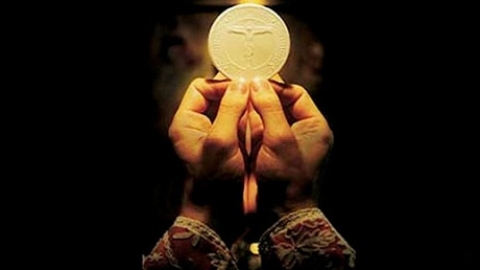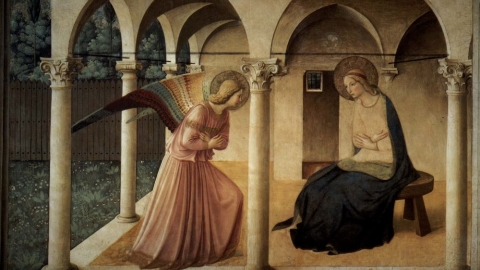50 Years of the New Mass - An Ongoing Series on the Liturgical Movement of Vatican II

Half a century ago, Pope Paul VI imposed a liturgical reform on the whole Church in the name of the Council that had just ended. Thus was born the mass of Vatican II. It was immediately rejected by two cardinals and since then the opposition against it has not weakened. This sad anniversary is an opportunity to trace its story.
On FSSPX.News, the story of this development is traced from beginning to end, in an ongoing series of articles, collected here:
The Making of the Roman Missal
December 3, 2019
Before considering the liturgical reform of Paul VI and the new Mass, it is necessary to recount the history of the Roman missal, since this reform claims to be a continuation of the past. The historical perspective will help with understanding the inanity of this claim.
The development of the Roman missal was spread over several centuries. Even if the essential elements, required for the accomplishment of the holy sacrifice of the Mass have always been present, they have been progressively enshrined in rites which make it possible to understand them and to grasp their deep meaning.
Read Part 1
The Development of the Roman Missal
December 13, 2019
The first part of this historical overview of the development of the Roman missal goes back to the eleventh century. A new decisive stage was the work of the Council of Trent and Pope St. Pius V, which we present in this second part.
Read Part 2
The Tridentine Missal Put to the Test by Gallicanism
December 19, 2019
The first and second parts of this historical overview recounted the development of the Roman missal, then the work of the Council of Trent and Pope Saint Pius V, up to the sixteenth century. Let us now consider the evolution of the liturgy in the period that followed.
Read Part 3
Dom Guéranger and the Liturgical Movement - I
December 28, 2019
The first three articles in this series took us to the 19th century. At that time, the Tridentine Missal, which had been established almost everywhere, was challenged in particular by Gallicanism and Jansenism. This difficulty was encountered especially in France, but also in Italy with the famous synod of Pistoia, held by the Jansenists in 1786.
Read Part 4
Dom Guéranger and the Liturgical Movement - II
January 6, 2020
The first four articles brought us to the 19th century, to Dom Guéranger and to his magnificent work of restoration of the Roman liturgy, prelude and beginning of the liturgical movement. There is, however, in the work of the founder of Solesmes, a remarkable passage which fits happily into the study of the new Mass.
Read Part 5
Fr. Emmanuel, Parish Priest of Mesnil-Saint-Loup
January 11, 2020
This article considers one of the most beautiful religious and pastoral achievements of the second half of the 19th century in France, accomplished by Fr. Emmanuel, who lifted up his parish through the liturgy. A monk from the Maredsous Benedictine Abbey once stated that three Benedictines summarized the liturgical effort of the 19th century: Dom Guéranger, doctor of the liturgy; Fr. Muard, apostle; and Fr. Emmanuel, pastor.
Read Part 6
Saint Pius X and the Liturgical Movement - I
January 21, 2020
A historian of the liturgical movement wrote: “With Pope Pius X, the liturgical movement entered into an entirely new period. Indeed, until then it had been the prerogative of individual forces in the Church. Voices were raised here and there, manifesting their common agreement on a kind of reaction against pervasive secularism, and advocating the return to sources as the true means of re-Christianization…But these appeals, which started to work against the fabric of daily practices, could hit without warning the indifference of a whole, and by far the most numerous, section of the clergy who took poorly to any change in habits of piety and methods to the apostolate. From the day when, on becoming pope, Pius X made himself the official propagator of the liturgical restoration, things changed. His multiple interventions on religious music, on the psalter, and on frequent communion, were so many energetic strokes which resolutely directed the Church towards a liturgical life steeped in traditional piety, sacramental grace, and inspired beauty.”The holy pope’s liturgical work is thus distinguished by its areas of intervention: religious music, decrees on holy communion, reform of the breviary and the liturgical calendar.
Read Part 7
Saint Pius X and the Liturgical Movement - II
January 21, 2020
The first article dealt with the intervention of St. Pius X in the field of liturgical music, which enabled him to lay the cornerstone of the Liturgical Movement: to restore the liturgy to its full glory, and by this means, to revive the liturgy's true Catholic spirit. Another intervention by St. Pius X concerns the liturgy considered at its heart: the practice of the sacraments.
Read Part 8
Saint Pius X and the Liturgical Movement - II
January 21, 2020
The first article dealt with the intervention of St. Pius X in the field of liturgical music, which enabled him to lay the cornerstone of the Liturgical Movement: to restore the liturgy to its full glory, and by this means, to revive the liturgy's true Catholic spirit. Another intervention by St. Pius X concerns the liturgy considered at its heart: the practice of the sacraments.
Read Part 9
Dom Gaspar Lefebvre and His Missal
February 15, 2020
Born of Benedictine fathers, the Liturgical Movement for a long time will see its history linked to that of the Order of Saint Benedict. The Movement, which sprung specifically from the French congregation and Dom Guéranger, would grow and quickly spread beyond the borders of France. Indeed, the expulsion of the religious (laws of 1880 and 1903) for a time would shift the Liturgical Movement’s center of gravity towards Belgium. Dom Lefebvre is a prominent representative.
Read Part 10
Dom Lambert Beauduin and the Liturgical Movement
March 2, 2020
Octave Beauduin was born in Rosoux, Belgium, on August 4, 1873. At the great Liège seminary, he was strongly influenced by Fr. Antoine Pottier, who was very attached to the workers’ apostolate and the encyclical Rerum Novarum. He was ordained a priest in 1897 and appointed supervisor and teacher at Saint-Trond. Starting in 1899, however, he joined the diocesan congregation of the Society of Labor Chaplains, founded five years earlier. He carried out various responsibilities in this young and modest congregation, principally that of running a house in Seraing where, with other priests, he undertook an apostolate with the laborers.
Read Part 11
The National Center for Pastoral Liturgy
March 19, 2020
On May 20, 1943, the Fathers Pie Duployé and Aimon-Marie Roguet (themselves Dominicans) founded the Centre de Pastorale liturgique (CPL) [Center for Pastoral Liturgy] on the premises of the Éditions du Cerf publishing house (belonging to the Dominicans). Dom Lambert Beauduin participated in the foundation meeting.
Read Part 12
Maria Laach Abbey
March 20, 2020
Maria Laach Abbey is a German Benedictine monastery located in Glees, in the Rhineland-Palatinate. Founded in the 11th century, the abbey has remained active, except for a time during the 19th century when it became a Jesuit scholasticate. Returning to its Benedictine vocation in 1892, it is now part of the Beuron congregation of the Order of Saint Benedict. It brings together most of the male and female Benedictine houses in the German language.
Read Part 13
Romano Guardini
March 22, 2020
Fr. Romano Guardini is rightly regarded as one of the fathers of the new liturgy. Through his writings, his liturgical experience, and his influence, he marked the liturgical movement and participated in its modernist deviation.
Read Part 14
Pius Parsch
March 26, 2020
With Romano Guardini, Fr. Pius Parsch is another key player from across the Rhine in the Liturgical Movement. Like Guardini, he was both a theorist and a liturgical “experimenter,” seeking to embody his ideas in new ceremonies.
Read Part 15
Liturgical Revolution and Reaction of the Hierarchy
May 20, 2020
During the Second World War, the German clergy found themselves confined to churches and sacristies by the anti-Christian government. However, they did not remain inactive. Among the innovators, a veritable liturgical revolution was being prepared and developed. The ideas of Dom Odo Casel, Fr. Romano Guardini, Fr. Pius Parsch were thus gaining ground.
Read Part 16
FSSPX.News / sspx.org: Dec 2019 - May 2020


